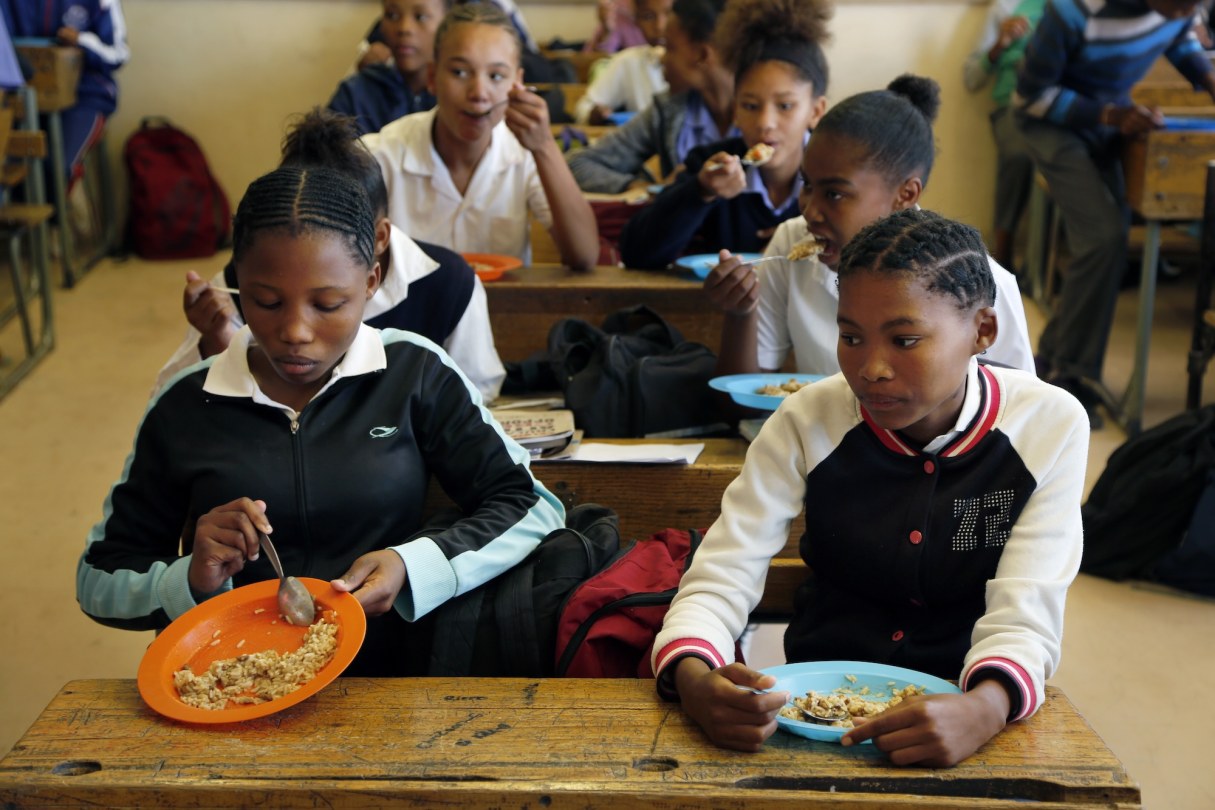More than 281 million people worldwide face 'acute food insecurity' — what does that mean?

More than 281 million people worldwide face 'acute food insecurity' — what does that mean?
hodell
Fri, 04/26/2024 - 08:10
Image
Hope O'Dell
Tria Raimundo
April 26, 2024In this photo taken on Thursday, Nov. 14, 2019, children share a meal they received from a government sponsored feeding scheme at the Delta Primary School in Vosburg, South Africa. The worst drought some farmers have seen in decades is affecting much of southern Africa. The United Nations says more than 11 million people now face crisis levels of food insecurity. (Photo: Denis Farrell / AP)
Conflicts & Crises
Middle East
A United Nations report released Wednesday found that the number of people experiencing high levels of acute food insecurity more than doubled last year compared to 2019. Of the more than 281 million people facing acute food insecurity worldwide, 705,200 in five countries and territories are facing “catastrophe,” the most extreme level of food insecurity and a classification that’s often used interchangeably with “famine.”
Famine is defined by the U.N. as the convergence of three conditions: at least 20% of the population is facing extreme hunger, meaning they go days eating little or nothing; 30% of children are too thin for their height; and the average death rate from hunger or disease has doubled.
In the Gaza Strip, one-quarter of the population — 576,600 people — are facing catastrophe or famine.
The Integrated Food Security Phase Classification uses five phases of food insecurity to classify hunger worldwide and predict potential spread:
Minimal: Over 80% of households are able to eat over 2,100 calories per person, per day — which is generally regarded as the threshold for sufficient daily intake — and less than 5% of people are malnourished.
Stressed: At least 20% of households are struggling to reach a sufficient caloric intake each day, and 5% to 10% of people are malnourished.
Crisis: At least 20% of households are either malnourished or “adopting irreversible coping strategies,” like selling items essential to their livelihoods, to support their diet. Acute malnutrition rates are between 10% to 15%.
Emergency: At least 20% of households are “facing extreme food shortages.” Disease levels are “excessively high,” and people are at a fast-increasing risk of dying from hunger. Malnutrition rates are between 15% and 30%.
Catastrophe or famine: At least 20% of households have “almost no food,” and “starvation, death and destitution are apparent.” The acute malnutrition rate is over 30%, and two of every 10,000 people are starving to death each day.
This work needs your support
Your tax-deductible donation enables us to break down the most complex global issues so you have the info you need to build a better world.
Donate
The number of people experiencing high levels of acute food insecurity more than doubled last year compared to 2019.
Read Time (minutes)
1 minute read
Welcome to Billionaire Club Co LLC, your gateway to a brand-new social media experience! Sign up today and dive into over 10,000 fresh daily articles and videos curated just for your enjoyment. Enjoy the ad free experience, unlimited content interactions, and get that coveted blue check verification—all for just $1 a month!
Account Frozen
Your account is frozen. You can still view content but cannot interact with it.
Please go to your settings to update your account status.
Open Profile Settings